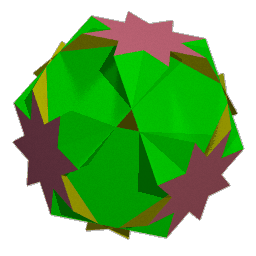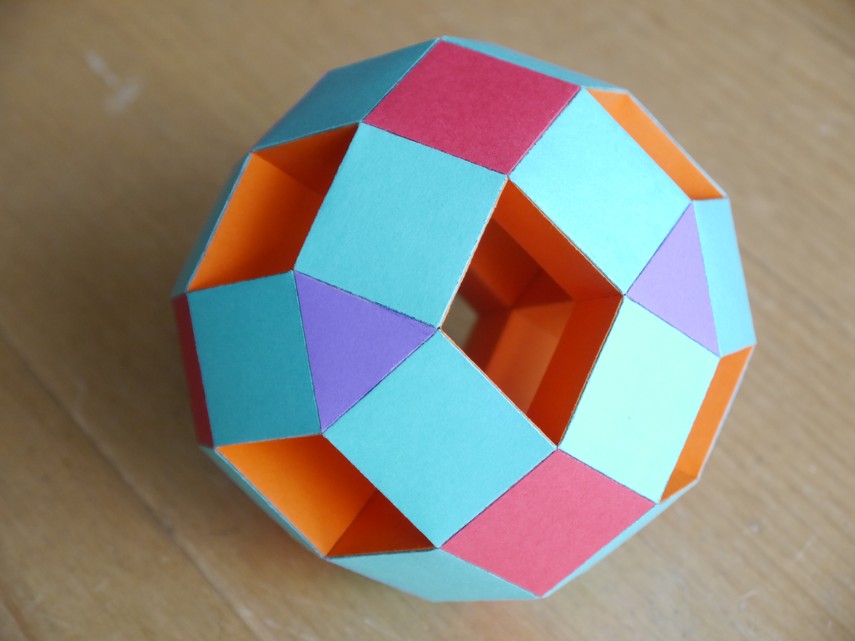
This study aimed to develop a 3-D cytoskeleton model with a spreading morphology to describe cell behavior. To describe both tensile and compressive properties of cells, the present study applied the tensegrity structure to develop numerical models.Ī successful simulation requires a reliable model to describe cell behavior and predict intracellular conditions. The cuboctahedron tensegrity (COT), a more complicated structure, is made of 48 cables, 12 struts, and 24 jointed nodes. Previous studies commonly employed the simple octahedron tensegrity (OT) structure, comprising of 24 cables and 6 struts with 12 jointed nodes, ,,. Different complexities of tensegrity structures are constructed by different layers of cable-strut net. Cables represent actin filaments and bear tensile forces, whereas struts represent microtubules and only stand compressive forces. Tensegrity is a structure composed of continuous cables and discrete struts. Although rheological responses of cells by changing prestress were modeled previously, ,, the dynamic simulation of cell behavior still receives little attention. Ĭytoskeleton models mostly concentrated on evaluating cell elasticity against cell deformation or material properties of cytoskeletal constituents. The tensegrity, and granular model comprise tensile elements and compressive elements (microtubules) that providing cell stability and intracellular force equilibrium. Although the prestressed cable net and open-cell foam model constructed three-dimensional (3-D) cytoskeletal models, the simulations only considered tensile elements (actin filaments). The prestressed cable net, and semi-flexible chain net are used to form actin cytoskeleton model for prediction of cell stiffness under mechanical perturbations in two-dimensions. Several cytoskeleton models investigated the mechanical properties of cells using computational stimulations, ,, ,.

The cytoskeleton also transmits mechanical stimulation for intracellular signal transduction. Cytoskeleton, the major mechanical component of cells, supports the cell architecture and dominates cell motility by performing contractility. The biological functions of cells, such as differentiation, growth, metastasis, and apoptosis are associated with cell shape, which is related to the mechanical forces in the cytoskeleton,. The dynamic flows of energy in struts imply that microtubules contribute to structure stabilization. The stored energy in actin filaments increased as cells spread out, while the energy stored in microtubules increased at initial spreading, peaked in middle phase, and then declined as cells reached maximum spreading. The maximum number of 12 FAs in the COT structure was required to achieve further spreading. Before the middle phase of spreading (half of maximum spreading area), cell attachment with 8 FAs obtained minimized cytoskeletal energy. The complex structure in COT provided further investigation of various FA number during different spreading stages.

The traction force pointed inward on peripheral FAs in the spread out COT structure. The COT structure, double the amount of cables and struts than the OT structure, provided sufficient spreading area and expressed similar features with documented cell behaviors. The OT structure consisted of 24 cables and 6 struts and had limitations soon after the beginning of spreading by declining energy stored in struts indicating the abolishment of compression in microtubules. The traction force on each FA was estimated by summarizing the force carried in sounding cytoskeletal elements. The spreading was simulated by assigning specific connection nodes for radial displacement and attachment to substrate to form FAs. To simulate the dynamics of intracellular force distribution and total stored energy during cell spreading, the present study employed different complexities of the tensegrity structures by using octahedron tensegrity (OT) and cuboctahedron tensegrity (COT). The tensegrity structure comprises tension-supporting cables and compression-supporting struts that represent the actin filament and microtubule respectively, and has many features consistent with living cells. Numerical simulations of intracellular force distribution to describe dynamic cell behaviors are still limited. Cytoskeleton plays important roles in intracellular force equilibrium and extracellular force transmission from/to attaching substrate through focal adhesions (FAs).


 0 kommentar(er)
0 kommentar(er)
